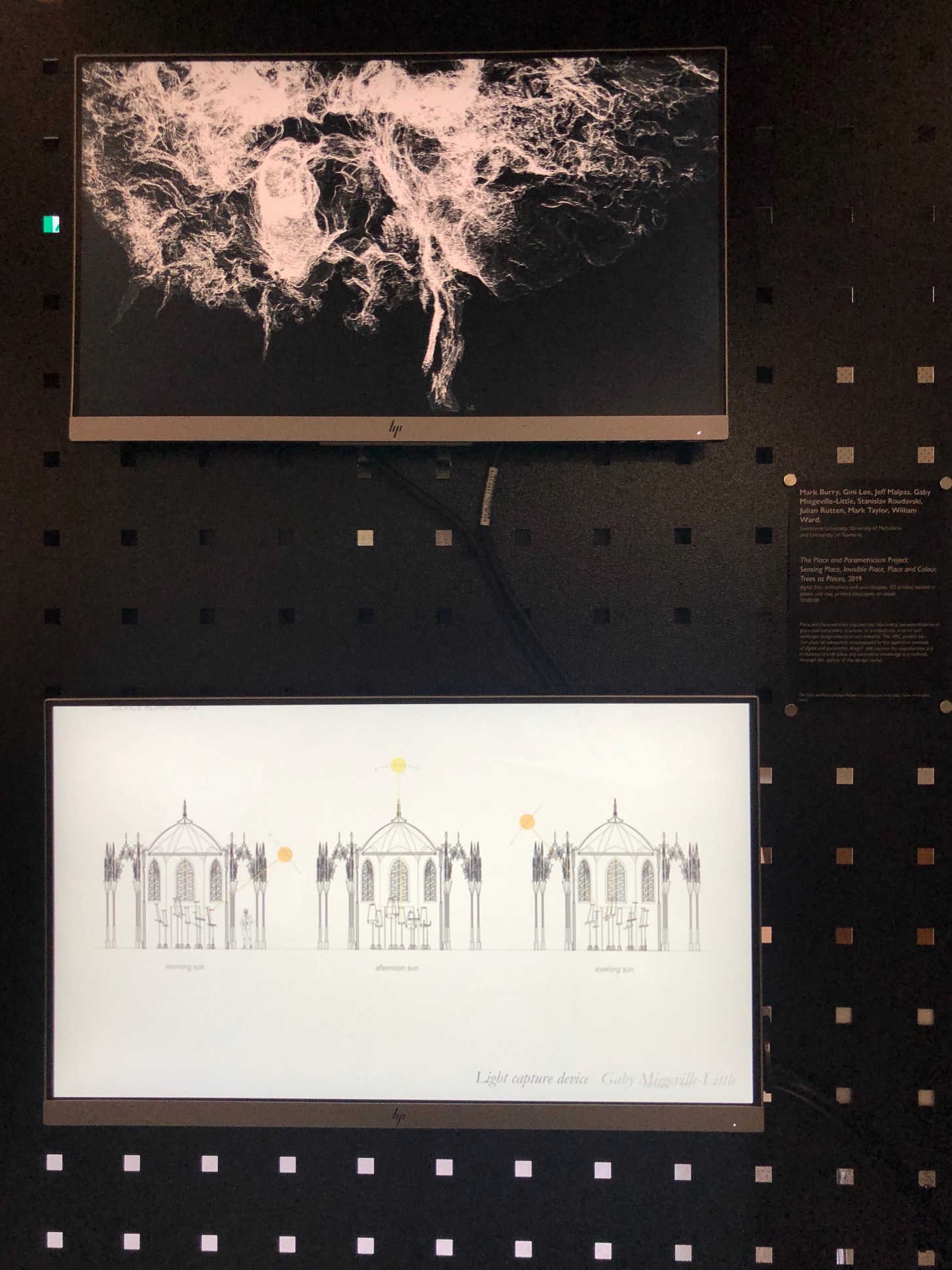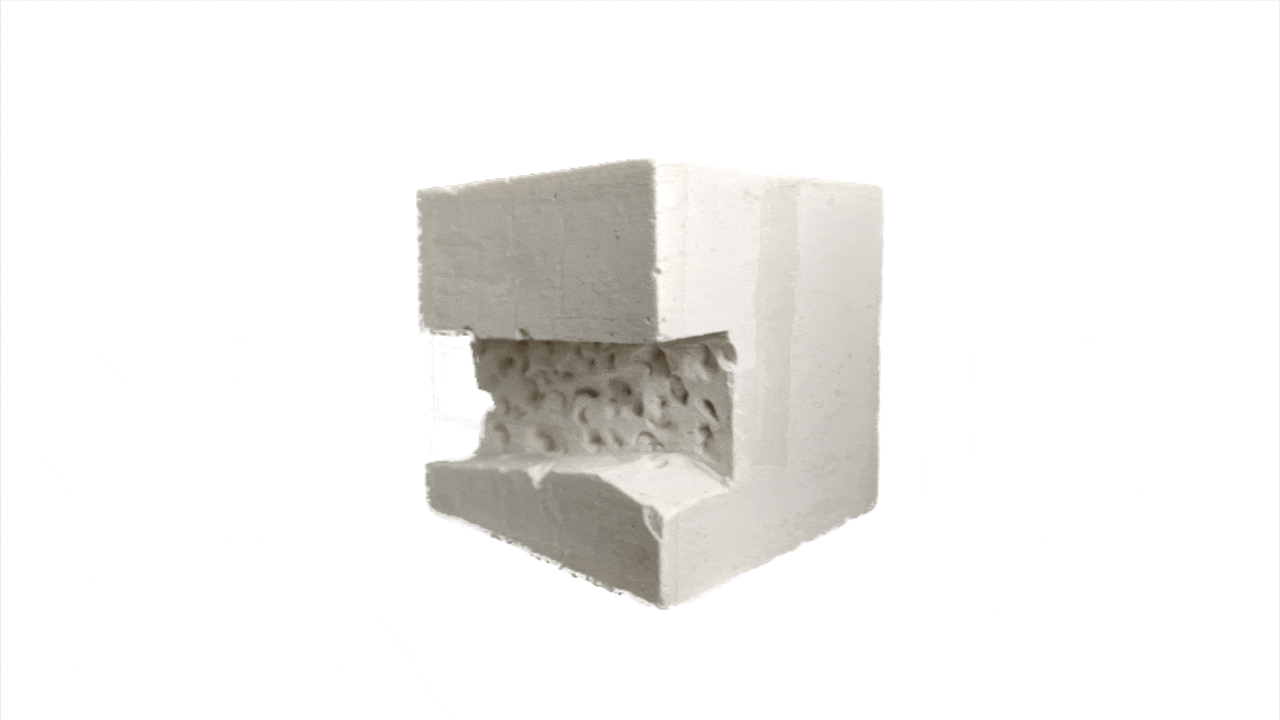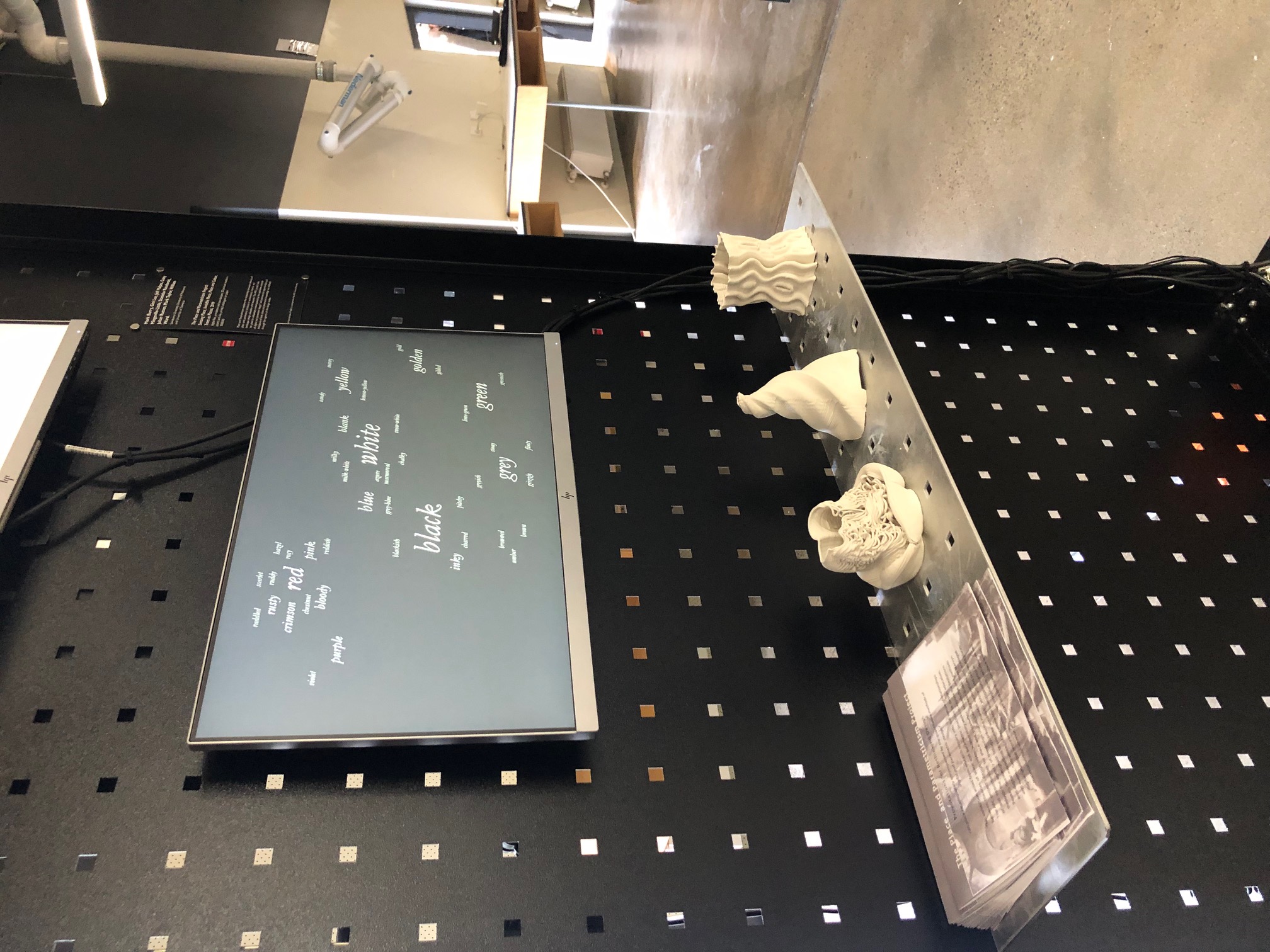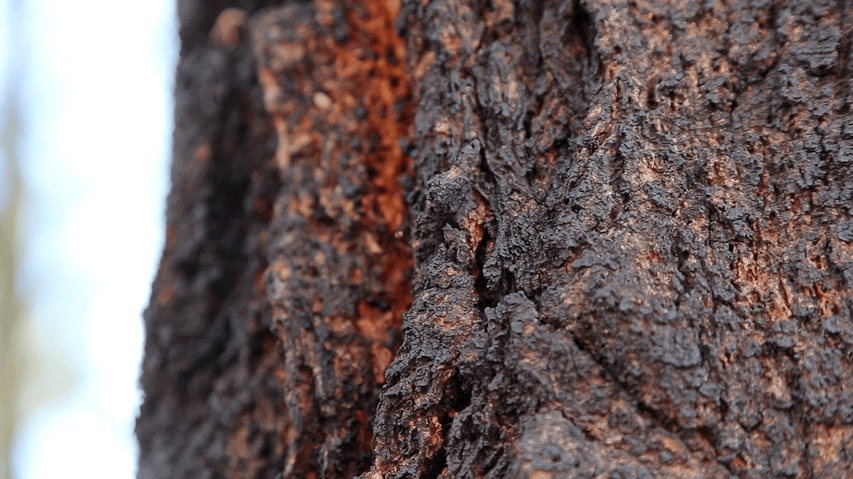Selected Exhibitions
Place and Parametricism
Invisible Places

Invisible Places: Photograph of exhibit at the Real/Material/Ethereal conference in Melbourne, Australia. Image by Julian Rutten.
Contributors: Julian Rutten, William Ward, Stanislav Roudavski, Mark Burry, Gini Lee, Jeff Malpas, Mark Taylor.
Presented as part of the Place and Parametricism exhibition at Real/Material/Ethereal: The 2nd Annual Design Research Conference at Monash University in Melbourne, Australia.
This project contributes to the discipline of architectural design. It examines the ability of augmented three-dimensional models to represent and extend habitable places. Within this theme, we focus on digital/analogue representations of performative, material/virtual interiors. This investigation seeks to address the gap in the existing knowledge about the cultural capabilities of digital/analogue environments. To address this gap, the project asks: how can interior places be extended into inclusive cultural landscapes? In response to this question we hypothesise that utilisation of digital scanning in combination with interactive digital simulations of events can aid understanding and imaginative amplification of real-world interior places.
The project transposed observes site interactions into digitally scanned environments and recorded or simulated sounds, temperatures, light levels, and other perceptual characteristics. To tests the efficacy of the resulting hybrid environments, the project engaged with characteristic real and imaginary paces that carry strong emotional associations. By displaying the feasibility and constraints of digitally enhanced places, this research contributes to the study of existing and future habitable environments. The project is significant because it demonstrates how virtual amplifications can convey place characteristics by evoking memories, impressions, modes of occupation and sequences of events. Its novel contribution is in the application of the quantitative techniques to these elusive qualitative and subjective aspects.
This recorded work has been selected for the exhibition within the Real/Material/Ethereal: The 2nd Annual Design Research Conference in 2019, the leading disciplinary research forum in Australia. The work is supported by the ARD DP170104010 grant and co-created with leaders in their fields. The publications are forthcoming, and the team are in an active discussion with the curators at the National Gallery of Victoria where this work will form a part of a major exhibition.
Place and Colour

Place and Color: Excerpt from exhibition video. Video by William Ward.
Contributors: William Ward; Stanislav Roudavski; Mark Burry; Gini Lee; Jeff Malpas; Mark Taylor.
Presented as part of the Place and Parametricism exhibition at Real/Material/Ethereal: The 2nd Annual Design Research Conference at Monash University in Melbourne, Australia.
This work contributes to better understanding and design of places within architecture, landscape architecture and urban design. Computation is now common in design, but some researchers criticise digital methods for their lack of qualitative engagement with place. The project obtains evidence to alleviate such concerns and inform the ethical use of computational in design. Focusing on one aspect of place representation, the project asks: how can literary descriptions of places contribute to their understanding and design? In response to this question, we hypothesise that computational analysis of texts can improve the understanding of place representations in literary descriptions.
To test this hypothesis, the project studies interrelationships between colour and place in one trilogy: Gormenghast by Mervyn Peake. The project uses computation to analyse the narrative and highlight characteristic examples. We use natural language processing to extract word lists of place and colour terms. Our techniques demonstrate relationships between these terms, their positions, and roles in the narrative as well as within their historical and semantic contexts. The experiments demonstrate that computational techniques do not undermine the imaginative capacity of literature. Instead, they provide an additional resource for understanding and creativity. The recorded work visually relates place nouns and colour adjectives to passages in the novel. It provides an innovative demonstration of the use of language to build impressions of places.
This work has been selected for the exhibition within the Real/Material/Ethereal: The 2nd Annual Design Research Conference, a leading disciplinary research event. The work is supported by the ARC DP170104010 grant and co-created with leaders in their fields. The publications are forthcoming, and the team are in discussions with the curators at the National Gallery of Victoria where this work will form a part of a major exhibition.
Links
Sensing Place

Sensing Place: Excerpt from exhibition video showing a project by Chen Lin. Video by the authors.
Contributors: Julian Rutten; Stanislav Roudavski; Mark Burry; Gini Lee; Jeff Malpas; Mark Taylor.
Presented as part of the Place and Parametricism exhibition at Real/Material/Ethereal: The 2nd Annual Design Research Conference at Monash University in Melbourne, Australia.
This work contributes to research in architecture and design. It studies forms of existence, materialization, and interactive construction of places. The project’s focus is on fluid, complex, and interconnected places. Such places present a challenge to data-driven approaches to design. In response, the project asks: how can designers account for the multiple, overlapping and subjective experiences of places? We hypothesize that sensing technologies can provides data-driven accounts of places that can extend designers’ appreciation of their meaning and function for a broad range of stakeholders.
The project’s method is design experiments. It used case-study places ranging from small to large and from everyday to imaginary. We first collects data using different types of sensing technologies. We then use this data to support speculative designs. Examined side-by-side, these experiments demonstrate representational capabilities of place data. The project confirms that digital information can be isolated from historical, cultural or physical attributes but still be useful for representation, extension and planning of places. Our other innovation is in the use of the sensory data to generate virtual extensions or alternatives to locations such as public gardens, care facilities or terrariums. This work is significant because it informs place-oriented design practice about the influences and capabilities of contemporary technologies.
This recorded work has been selected for the exhibition within the Real/Material/Ethereal: The 2nd Annual Design Research Conference in 2019, the leading disciplinary research forum in Australia. The work is supported by the ARD DP170104010 grant and co-created with leaders in their fields. The publications are forthcoming, and the team are in an active discussion with the curators at the National Gallery of Victoria where this work will form a part of a major exhibition.
Images

Sensing Place: Photograph of the exhibition (on bottom shelf). Image by Julian Rutten.
Links
Trees as Place

Trees as Place: Excerpt from exhibition video. Video by Julian Rutten.
Contributors: Julian Rutten; Stanislav Roudavski; Mark Burry; Gini Lee; Jeff Malpas; Mark Taylor.
Presented as part of the Place and Parametricism exhibition at Real/Material/Ethereal: The 2nd Annual Design Research Conference at Monash University in Melbourne, Australia.
This project contributes to the theory and practice of architectural, urban and landscape design, particularly in the context of design for biodiversity. It focuses on large old trees. They are important as habitats. Yet, their numbers dwindle. To address this problem, design needs to consider the agency and needs of nonhuman stakeholders. Current research in design lacks the necessary theory and practices. In response, the project asks: what forms of communication can depict trees as places for multiple forms of life? It hypothesises that an integration of quantitative and qualitative representations can reveal ethical, aesthetic, biological and technical aspects of trees as places.
Because plants differ from humans and animals, it is difficult to express their lived worlds for human understanding. In response, the project uses photography, video, laser scans and sound to expose hidden aspects of tree and their ecosystems. In a reverse move, the project represents various ways trees serve as meaningful places or habitats. The project provides an innovative interpretation of trees as places, investigates the capabilities of existing means of representation and frames key questions for further exploration.
The video documentation of the project has been selected to participate in a curated event Real/Material/Ethereal: The 2nd Annual Design Research Conference in 2019. The theoretical concepts of the project have been published in a peer-reviewed research article. The components of the project have been peer-selected for presentation at the Digital Cultural Heritage: Future Visions conference in Shanghai, China in 2019, winning the best paper award. The work was supported by the ARD DP Grant and co-created with colleagues who are professors and leaders in their fields.
Links
Backlinks